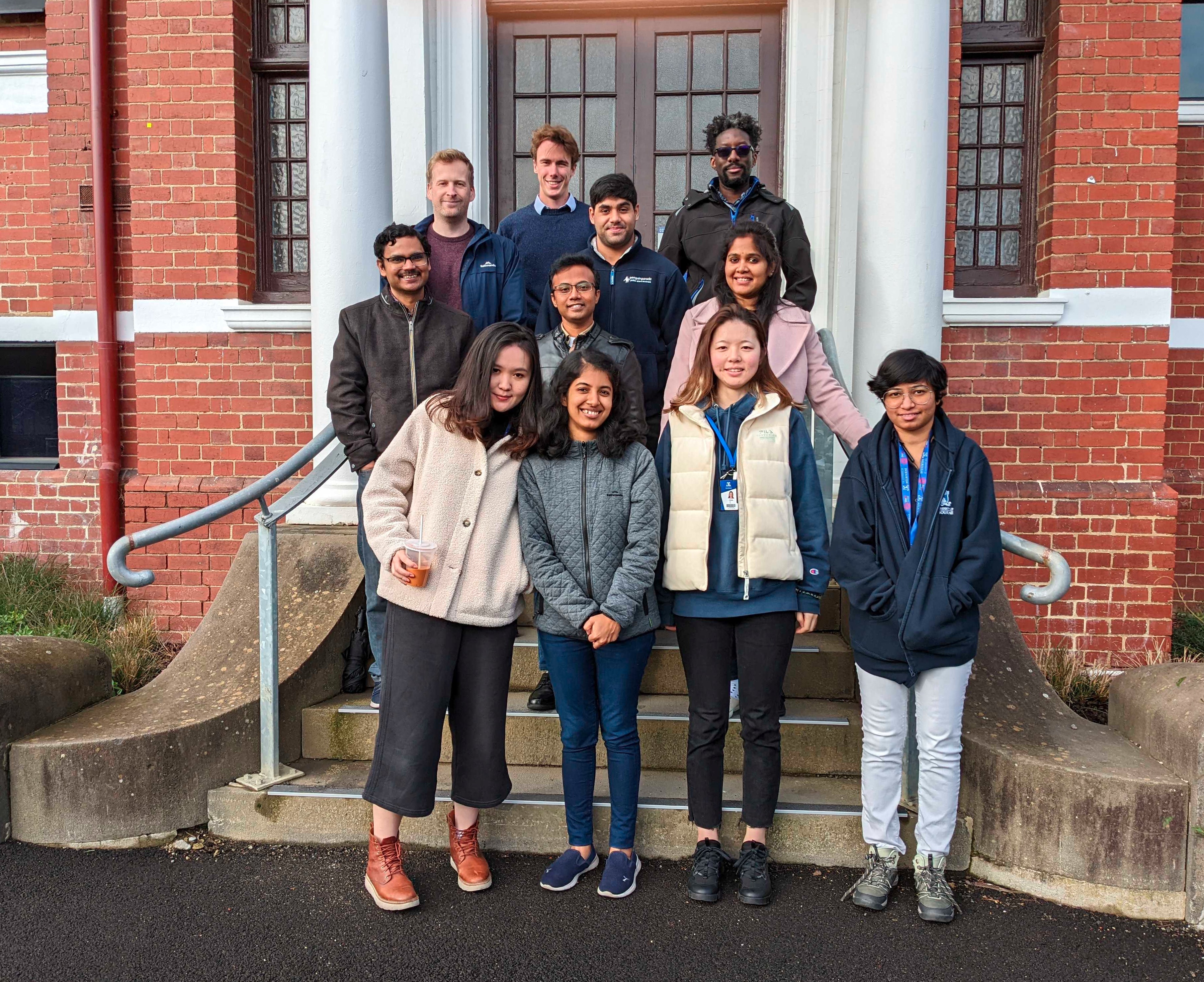Debnath Ghosal laboratory
-
Head of Laboratory

Dr Debnath Ghosal+61 3 8344 8441
Research Overview
View Dr Ghosal's latest PubMed publications listing here.

Bacterial cells were long thought to be “bags of enzymes” with little or no intracellular organisation. However, over the last three decades, the advent of fluorescent proteins and development of new imaging modalities (e.g. electron cryotomography, super-resolution light microscopy etc.) have revolutionised our understanding of the bacterial domain of life.
To survive efficiently in its environment, the bacterial cell requires a high spatiotemporal organisation both structurally and metabolically. They utilise sophisticated sensory and regulation pathways to orchestrate motility and cell-cell communication, assemble complex molecular machines to inject effectors into neighbouring bacterial/eukaryotic cells, amass nutrients inside specialised compartments, possess eukaryotic homologues of actin, tubulin and intermediate filaments, and even some of them own membrane bound organelles and distinct cellular compartmentalisation. This paradigm shift in our understanding has opened up new opportunities to explore ever increasing internal complexities within bacterial cells!
Electron cryotomography (cryo-ET) has unrivalled power to visualise the native structure of macromolecular complexes in their mise-en-scène (i.e., inside "intact" cells) and thus provides unprecedented mechanistic and structural insights. In this method, plunge-frozen vitreous samples are iteratively imaged in a transmission electron microscope (TEM) as they are tilted, resulting in a stack of 2D images (tilt-series) that can be reconstructed into a 3D volume or a “tomogram”. With resolutions of ~2-5 nm, cryo-ET uniquely bridges the “resolution gap” between atomic structures and gross cellular morphology.
Additionally, recent improvements in software, hardware and the implementation of improved subvolume averaging methods have allowed cryo-ET to enter the realm of subnanometer resolution. In addition to structural information, cryo-ET also provides pivotal insights into the distribution pattern of protein complexes in cells, their relative orientations and structural dynamics making this an ideal method for "visual proteomics" and in-cell structural biology. We are harnessing this unique power of cryo-ET and combining it with correlative light and electron microscopy (CLEM), and Focused Ion Beam (FIB) milling to elucidate the structure and function of large bacterial macromolecular assemblies in their native context inside "living" cells.
Fig. 1: Cryotomogram of an intact Bdellovibrio bacteriovorus cell. Visible cellular structures are segmented and annotated. Courtesy of Grant Jensen lab.
We complement cryo-ET with other biochemical and biophysical techniques such as in vitro biochemical reconstitution, genetic and functional analysis, fluorescence imaging and high-resolution structural techniques such as X-ray crystallography and cryo-EM.
We are particularly interested in bacterial molecular machines that are responsible for toxin delivery (bacterial secretion systems), and bacterial cytoskeletal (rather, bacterial ‘cytomotive’) filaments that execute a diverse array of cellular functions.
Collaborators
Professor Joseph Vogel, Washington University in St Louis
Professor Somenath Bakshi, Cambridge University
Professor Shaker Chuck Farah, University of São Paulo
Professor Howard Shuman, University of Chicago
Research Opportunities
This research project is available to PhD students, Masters by Research, Honours students, Post Doctor Researchers to join as part of their thesis.
Please contact the Research Group Leader to discuss your options.
Research Projects
Faculty Research Themes
School Research Themes
Cellular Imaging & Structural Biology, Molecular Mechanisms of Disease
Key Contact
For further information about this research, please contact Head of Laboratory Dr Debnath Ghosal
Department / Centre
Unit / Centre
MDHS Research library
Explore by researcher, school, project or topic.